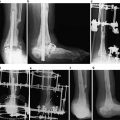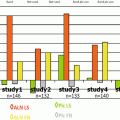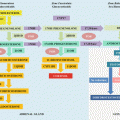Bone resorption
Calcium absorption
Decrease in the excretion of calcium
pHPTH
Malignancy
Thyrotoxicosis
Immobilization
Milk alkali syndrome
Hypervitaminosis D
Granulomatous disease
Chronic kidney disease
Rhabdomyolysis and acute renal failure
Thiazide diuretics
Downregulation of the calcium receptor sensor
Medication
Endocrinal disorders
FHH
Lithium
Hypervitaminosis A
Pheochromocytoma
Adrenal insufficiency
Primary Hyperparathyroidism
pHPTH is a disorder that results from the hypersecretion of the parathyroid hormone. Most cases are sporadic, although around 5–10 % correspond to familiar forms that can be isolated or associated with dominant autosomal hereditary endocrine diseases, such as multiple endocrine neoplasia type 1 (MEN 1) and type 2A (MEN 2A). Its incidence increased significantly in some countries from the mid-1970s onwards with the beginning of systematic measurement of serum calcium. Hypercalcemia in this disorder occurs because of activation of the osteoclasts mediated by the parathyroid hormone culminating in an increase in bone resorption. pHPTH occurs more frequently because of the presence of parathyroid adenoma (~85 %), less frequently owing to a parathyroid hyperplasia (~15 %), and, in rare cases, as a result of parathyroid carcinoma (<1 %) [7]. Patients may develop small increases in serum calcium (increases lower than 11 mg/dl or 2.75 nmol/L) or intermittent hypercalcemia [8–10].
Secondary and Tertiary Hyperparathyroidism
Patients with chronic kidney disease and secondary hyperparathyroidism usually have normal or low levels of serum calcium although, as the disease progresses, they may develop hypercalcemia. The increase in serum calcium occurs more frequently in patients with adynamic bone disease and a marked reduction in bone turnover. Hypercalcemia is found in these patients because of a marked reduction in the capture of calcium in the bone, as occurs after the ingestion of calcium carbonate to treat hyperphosphatemia [11].
In other patients with advanced-stage kidney disease hypercalcemia derives from the autonomous production of PTH, a disorder known as tertiary hyperparathyroidism.
Malignancy
Malignant neoplasias are the most frequent cause of hypercalcemia in hospitalized patients [12, 13]. The frequency oscillates between 10 and 20 % in cancer patients, and may be as high as 40 % in some samples, depending on the duration of the disease, primary site, presence of metastases, and type of malignity.
In the case of solid tumors, the greatest risk of developing hypercalcemia is found with breast and lung neoplasias. This is also the case with tumors in the kidneys, esophagus, and uterus; epidermal tumors; and cholangiocarcinoma. The hematological cancers most likely to develop hypercalcemia are multiple myeloma and lymphoma.
The mechanism for increasing bone resorption in cases of malignant tumors depends on the type of cancer and the presence or not of bone metastases. In patients with bone metastases it is common to find local osteolysis through the direct induction of the tumor cells. Cytokines, such as tumor necrosis factor and interleukin 1, appear to play an important role in differentiating osteoclast precursors in mature osteoclasts [14].
The main cause of hypercalcemia in patients with solid non-metastasized tumors is the secretion by tumors of peptide related to the parathormone (PTH-rP) [14]. In patients with lymphoma hypercalcemia is due to the extrarenal production of calcitriol from calcidiol (irrespective of the PTH) through the activation of mononuclear cells (macrophages). Finally, the ectopic secretion of PTH is a rare cause of hypercalcemia, which has been documented in only a handful of patients.
In general, the consumptive malignity syndrome precedes the pattern of hypercalcemia, which tends to be more severe than that found in pHPTH. Levels higher than 13 mg/dl (3.25 nmol/L) are generally observed. Hypercalcemia is associated with a low life expectancy in patients with neoplasias, regardless of how well calcemia responds to treatment.
Thyrotoxicosis
Mild hypercalcemia is seen in around 15–20 % of patients with thyrotoxicosis [15, 16]. The thyroid hormone has bone resorption properties, causing a state of high bone turnover, which may culminate in osteoporosis. Hypercalcemia typically disappears following correction of hyperthyroidism. If hypercalcemia persists after the restoration of normal thyroid activity, we need to measure the serum PTH in order to evaluate the accompanying hyperparathyroidism.
Another less frequent cause of hypercalcemia due to increased bone resorption is immobilization by a high-turnover bone disease, such as occurs in Paget’s disease.
A high ingestion of calcium is, in isolation, a rare cause of hypercalcemia, since the initial increase in serum concentrations of calcium inhibits the release of PTH, as well as the synthesis of calcitriol, despite the fact that, when combined with reduced urinary excretion, it may lead to hypercalcemia.
Alkaline Milk Syndrome
In the absence of kidney failure, hypercalcemia may occur after the ingestion of large quantities of calcium with absorbable substances (sodium bicarbonate and calcium carbonate), leading to hypercalcemia, metabolic alkalosis, kidney failure, and, usually, nephrocalcinosis. This condition is known as the alkaline milk syndrome [17, 18]. It typically occurs when excess calcium carbonate supplements have been administered during treatment of osteoporosis or dyspepsia. One study found that this syndrome was responsible for 8.8 % of cases of hypercalcemia between 1998 and 2003 [19]. This is one of the few examples of purely absorptive hypercalcemia.
Hypervitaminosis D
Excess intake of vitamin D is a rare cause of hypercalcemia. The dose of vitamin D needed to induce intoxication varies from patient to patient, reflecting differences in absorption, storage, and metabolism, but serum levels of 25OHD, the principal metabolite of vitamin D, >150 ng/ml, generally indicate intoxication. High serum levels of 1.25(OH)2D3 may be observed after ingestion of calcitriol to treat hypoparathyroidism. Owing to its short half-life, the hypercalcemia induced by calcitriol usually lasts between 1 and 2 days. Suspension of calcitriol treatment and its replacement with a saline solution may be the only treatment necessary in such cases. On the other hand, hypercalcemia caused by the ingestion of large quantities of calcidiol may last for several weeks, since the excess vitamin D is cleared slowly by the organism (weeks to months). Aggressive treatment with glycocorticoids, which antagonize the action of calcitriol, and intravenous bisphosphonates may be necessary [20, 21].
Granulomatous Diseases
Hypercalcemia may be found in around 10 % of patients with sarcoidosis and an even higher percentage of these individuals develop hypercalciuria. The main hypercalcemia disorder in these cases is the extrarenal activation of 25-dihydroxyvitamin D by 1ɑ-hydroxylasis in the activated macrophage tissue, which is resistant to normal feedback control. Other granulomatous diseases that may cause hypercalcemia through the same mechanisms include the following: tuberculosis, berylliosis, disseminated coccidioidomycosis, histoplasmosis, hanseniasis, and pulmonary eosinophilic granulomatosis [22]. Although most patients present normal calcium levels, they may have hypercalciuria and their urinary excretion of calcium should be measured as part of the diagnostic investigation. In addition, hypercalcemia and hypercalciuria may not be apparent until calcium and vitamin D are ingested.
Chronic Kidney Failure
It is known that chronic kidney failure in isolation, although associated with diminished calcium excretion, does not lead to hypercalcemia, owing to hyperphosphatemia and decreased synthesis of calcitriol. On the contrary, these patients commonly present hypocalcemia with hyperphosphatemia. Hypercalcemia, however, may be observed in patients receiving calcium carbonate or calcium acetate in conjunction with dietetic phosphate, if they are being treated with calcitriol in an attempt to revert a hypocalcemia or a secondary hyperparathyroidism.
Rhabdomyolosis and Acute Kidney Failure
Hypercalcemia has been described during the diuretic phase of acute kidney failure frequently seen in patients with rhabdomyolosis. The hypercalcemia is caused by the mobilization of calcium from the damaged muscle [23].
Thiazide Diuretics
The administration of thiazide diuretics may increase serum calcium and this cannot be entirely explained by hemoconcentration. Thiazide diuretics are capable of reducing urinary excretion of calcium and are used in the treatment of patients with recurrent hypercalciuria and nephrolithiasis. Rarely do they cause hypercalcemia in healthy individuals, but they may do so in patients with an underlying increase in bone resorption, such as those with hyperparathyroidism.
Familial Hypocalciuric Hypercalcemia
Familial hypocalciuric hypercalcemia (FHH) is a rare dominant autosomal disorder that is characterized by a genetic defect in the calcium receptors of the parathyroid glands and the kidneys. It leads to mild hypercalcemia and the most striking laboratory finding is hypocalciuria, suggesting tubular resorption of the excess calcium. The level of calcium in urine is generally <50 mg/24 h and the calcium/creatinine clearance ratio < 0.01 [24]. This diagnosis should be considered in asymptomatic patients with mild-to-moderate hypercalcemia, who are hypocalciuric and have a family history of hypercalcemia. Its importance as a diagnostic tool is that it provides a differential diagnosis for pHPTH as a way of avoiding unnecessary surgery.
Lithium
Patients who are long-term users of lithium may develop mild-to-moderate hypercalcemia, probably owing to increased secretion of PTH, through an increase in the levels at which calcium inhibits the release of PTH. The hypercalcemia usually, but not always, goes into remission when treatment is interrupted. Treatment with lithium may also unmask a pattern of HPP; it may, on the other hand, increase serum concentrations of PTH without, however, altering the calcemia [25].
Hypervitaminosis A
Excessive ingestion of vitamin A (>50,000 UI/d) leads to an increase in bone resorption, culminating in osteoporosis, fractures, hypercalcemia, and hyperostosis. The mechanism by which vitamin A stimulates bone resorption is still not fully clear [26].
Pheochromocytoma
Hypercalcemia is a rare complication of pheochromocytoma. NEM-2A may occur as a result of hyperparathyroidism or the pheochromocytoma itself. In this case, the hypercalcemia may be due to the tumor producing PTH-rp. Its concentration in serum may be reduced with the use of ɑ-adrenergic blockers, suggesting that ɑ-adrenergic stimulation plays a role in the etiology of the disease [27].
Adrenal Failure
Hypercalcemia may be a finding in an adrenal crisis. Multiple factors appear to contribute to hypercalcemia, among which are the following: an increase in bone resorption, an increase in tubular resorption of calcium, hemoconcentration, and an increase in calcium–protein bonding. The use of glycocorticoids reverts the hypercalcemia [28, 29].
Uncommon Causes
In certain situations, the differential diagnosis for hypercalcemia may be a genuine challenge in clinical practice for the endocrinologist and general physician. In the following pages we summarize a number of etiologies that are so uncommon that they are not listed in many reviews of hypercalcemia and rarely considered in patients with hypercalcemia of unknown etiology (Table 20.2).
Table 20.2
Rare causes of hypercalcemia
Wegener’s granulomatosis |
Cat scratch fever |
Crohn’s disease |
Acute granulomatous pneumonia |
SLE |
HIV-associated lymphadenopathy |
Lymphedema of chest and pleural cavities |
Massive mammary hyperplasia during pregnancy |
Omeprazole in acute interstitial nephritis |
Theophylline toxicity |
Parenteral nutrition |
Foscarnet |
Eosinophilic granuloma |
Leprosy in rheumatoid arthritis |
Mycobacterium avium complicating AIDS |
Cytomegalic virus infection in AIDS |
Chronic berylliosis |
Nocardia asteroides pericarditis |
Diffuse octeoclastosis |
Brucellosis |
Hypercalcemia Caused by High Levels of Calcitriol
As with sarcoidosis, tuberculosis, and some fungal infections, other less common diseases characterized by the formulation of granulomas have been associated with secondary hypercalcemia at high levels of 1.25-dihydroxyvitamin D. Among these are Wegener’s granulomatosis, Crohn’s disease, catch scratch fever, acute granulomatous pneumonitis (a rare complication of treatment with methotrexate), hepatic granulomatosis, and others [30].
PTH-rP-Induced Hypercalcemia in Benign Diseases
Although humoral hypercalcemia has long been recognized in neoplasias, hypercalcemia resulting from high levels of PTH-rP in a benign disease is very uncommon. This situation has been described in one patient with systemic lupus erythematosus (SLE) with the involvement of multiple organs, lymphadenopathy associated with HIV, diffuse mammary hyperplasia in pregnancy, and benign ovarian and kidney tumors among others [30].
Clinical Manifestations
The increase in serum calcium causes changes in all organ systems, since its extracellular levels impair the tissue function of the brain, peripheral nerves, smooth visceral musculature, and cardiac and kidney muscles. The severity of the clinical manifestation does not depend exclusively on the level of serum calcium, but on the speed of onset, age, clinical conditions, presence of metastases, liver and kidney failure, and progression of the underlying disease (Table 20.3).
Table 20.3
Clinical manifestations
Gastrointestinal | Renal | Cardiovascular | Neuropsychiatric | Musculoskeletal |
|---|---|---|---|---|
Constipation Anorexia Nausea Peptic ulcer diseasea Acute pancreatitisa | Nephrolithiasis Nephrogenic DI Renal tubular acidosis (type1) Tubular renal dysfunction Renal insufficiency Chronic hypercalcemic nephropathy Nephrocalcinosis | Shortened QT interval Deposition of calcium in heart valves, coronary arteries, and myocardial fibers Hypertension Cardiomyopathy | Anxiety Depression Cognitive dysfunction Lethargy Confusiona Stupora Comaa | Muscle weakness Bone painb |
Gastrointestinal
Renal
The most important renal manifestations are nephrolithiasis, tubular renal dysfunction, and kidney failure, which may be acute or chronic. Chronic hypercalcemia leads to a defect in the ability of urine to concentrate and may give rise to polyuria in up to 20 % of patients, although the mechanism that causes this is unclear. Chronic hypercalcemic nephropathy has the clinical characteristics of an interstitial nephritis with polyuria, natriuresis, and hypertension. Hypertension, nephrolithiasis, obstruction, and possible infections may contribute to an additional loss of kidney function [34].
Cardiovascular
In chronic hypercalcemia, deposits of calcium may be observed in the heart valves, coronary arteries, and myocardial fibers.
Neuropsychiatric
The most common neuropsychiatric symptoms are anxiety, depression, and cognitive impairment. More severe symptoms are found in elderly patients with intense hypercalcemia. There may be personality changes and emotional disturbances when concentrations of calcium exceed 12 mg/dl (3 nmol/L), while confusion, psychosis, hallucinations, drowsiness, and coma are rare [38, 39].
Physical Findings
There are no specific physical findings for hypercalcemia, apart from those that may be related to an underlying disease, such as malignity syndrome. Ceratopathic bands reflect the deposit of calcium phosphate in the subepithelial portion of the cornea, although this is a very rare finding, normally discovered by means of an ophthalmological examination using a slit lamp [40].
Diagnostic Evaluation/Laboratory Diagnosis
Hypercalcemia is a relatively common clinical problem. As with most cases of hypercalcemia, it is caused by pHPTH or malignant disorders, and the laboratory diagnosis typically involves distinguishing between these two clinical conditions. Generally speaking, it is not difficult to differentiate them. Symptoms of malignancy are frequently present at the time of diagnosis of hypercalcemia and serum levels of calcium are normally higher than those in patients with pHPTH (Table 20.4).
Table 20.4
Interpretation of biochemical and hormonal changes in hypercalcemia
PTH | PTH-rP | 25 OHD | 1,25 OH2D | Calcium/creatinine | |
|---|---|---|---|---|---|
pHPTH | ↑ | ↓ | N | N or ↑ | >0.02 |
FHH | N ou ↑ | ↓ | N | N | <0.01 |
PTH-rP malignancy | ↓ | ↑ | N | N or↓ | |
Non-PTH-rP malignancy | ↓ | ↓ | N | N or ↓ | |
Granulomatous disease | ↓ | ↓ | N | ↑ | |
Hypervitaminosis D | ↓ | ↓ | ↑ | N or ↑ |
A single high-serum calcium value is not a sufficient diagnosis of hypercalcemia and the measurement should be repeated to confirm the diagnosis, preferably without the use of a tourniquet. If available, previous serum calcium levels should be reviewed. The presence of asymptomatic hypercalcemia of long duration suggests pHPTH and also increases the likelihood of familial hypercalcemic hypocalciuria. The degree of hypercalcemia may also be useful for differential diagnosis. pHPTH is normally associated with mild hypercalcemia (<11 mg/dl). Values of >13 mg/dl are more consistent with hypercalcemia resulting from malignant disorders.
Stay updated, free articles. Join our Telegram channel

Full access? Get Clinical Tree






